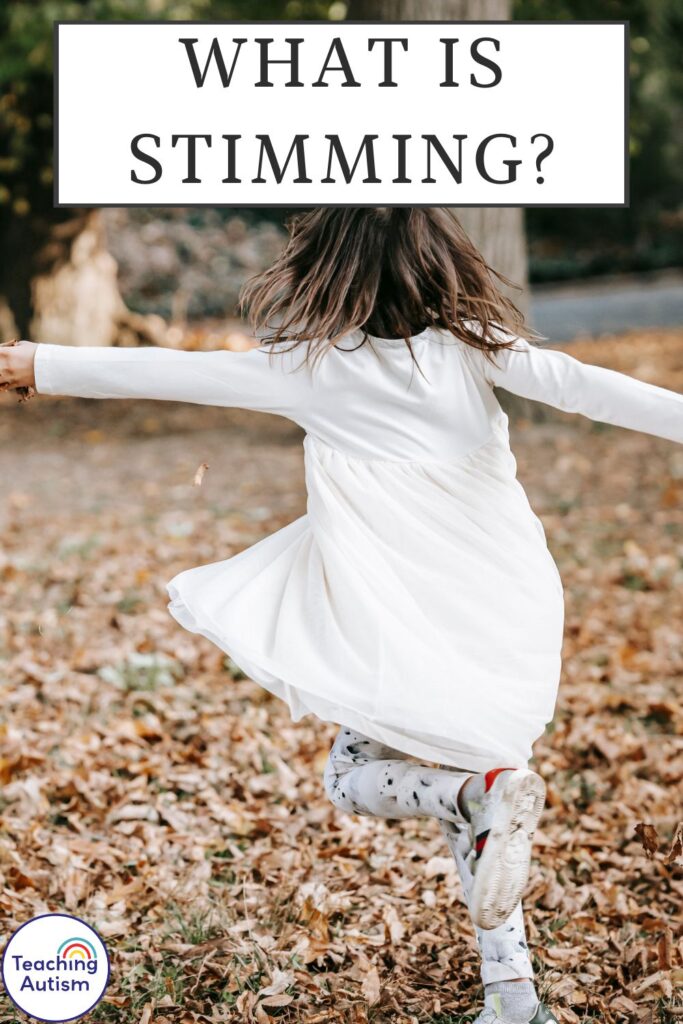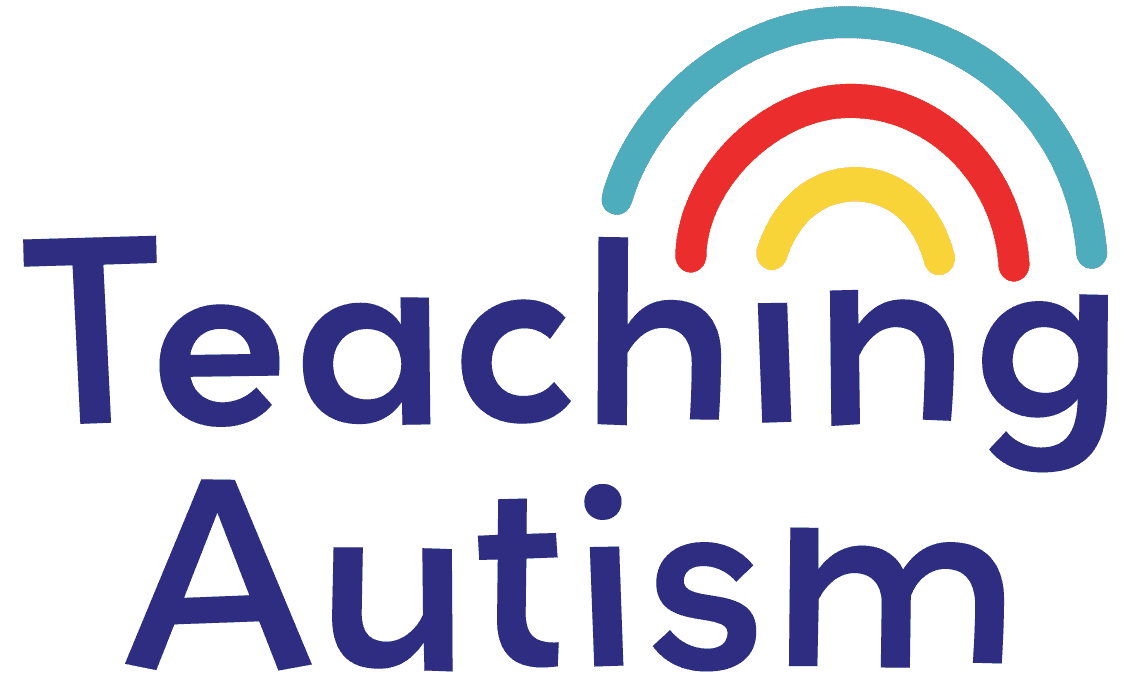What is Stimming?
What is Stimming?
‘Stimming’ is a term used for self-stimulating behavior. It is also referred to as self-stimulatory behavior. And stimming is a behavior that is characterised by repetitive motions, noises or use of objects. In this blog post today I’m going to be talking all about what stimming is, why people engage in these behaviours and the benefits of them. I hope that this blog post will help you to have a deeper understanding of stimming behaviors and appreciate why you may see your students (or children at home) stimming.
You may have found the term ‘stimming’ when there are discussions around autism and sensory processing disorders.. And these behaviors are coping mechanisms for many of our students. It’s really important that we continue to accept our student’s individual stimming behaviors and needs.. And come to accept these as part of who they are. But, I’m also going to touch on what to do if these stims are becoming a danger to the person or others around them.
Examples of Stimming
Stimming looks different for each individual.. This is because everyone is different and has their own needs. Some types of stimming behaviors are;
- Hand-flapping.
- Rocking.
- Jumping.
- Spinning.
- Echolalia.
- Pacing.
- Finger snapping / clicking.
- Tapping.
- Humming.
- Chewing.
- Head banging.
- Scratching.
- Twirling hair.
- Whistling.
- Bouncing legs.
- Sucking on objects.
- Repetitive use of objects.
- Swaying.
- Lining up objects.
- Squeezing objects.
Why Does Someone Stim?
There are lots of reasons why someone may engaging in stimming behaviors. These can include (but are not limited to);
- Sensory regulation; stimming can help the individual to manage sensory overload or under-stimulation. It helps them to adjust their sensory input to a more comfortable level.
- Emotional regulation; stimming can help the individual to regulate their emotions. It may help them to cope with feelings of anxiety, excitement, stress or even frustration.
- Self-soothing; similar to emotional regulation.. It can also be a self-soothing behavior that can help the individual to calm down when they are feeling stressed or overwhelmed.
- Focus and concentration; stimming can help with improving concentration and focus for many individuals. It can be particularly helpful at filtering out external distractions.
- Pain management; some stimming behaviors can help an individual be distracted away from pain or discomfort.
- Joy; sometimes stimming is to express happiness, excitement, or pleasure. It can be used as a way for the individual to express positive emotions.
- Communication; stimming can also work as a form of non-verbal communication where the individual is stimming to express their needs, desires or emotions.
- Boredom; stimming is a great way to provide stimulation in ‘boring’ or under-stimulating environments. This helps pass time for the individual.
- Habit; some behaviours may start as a response to a need or situation.. But over time they can become more of a habit for the individual. This can be because it brings them comfort and joy.. And makes them feel good.
- Neurological; for some individuals, stimming can just be a natural part of who they are, rather than being tied to external factors or internal states.
Respecting Stimming
As educators it’s really important that we recognize and respect our student’s stimming behaviors. This is essential for us to be able to create a supportive and inclusive environment for all of our students. And like I’ve shared in this blog post already today.. Stimming can serve many purposes for our students including self-regulation.
Stimming is often a necessary and beneficial part of our student’s day and who they are. When our students stim, they are more likely to be able to focus, feel comfortable and engage with you and their learning. When your students feel respected and supported by you for being themselves.. This will help them to feel more comfortable in your presence and in your classroom.. This means that they will then be more likely to actively participate and develop positive relationships with you and your team.
As educators, it’s important that we lead by example to all students that we come into contact with (and others outside of the school setting too. Many people look to educators as role models). And so when we are showing that we respect our student’s and their needs, including their stimming.. We are showing that it is important to accommodate and appreciate the diversity of others around us.. And how we can recognize and celebrate this. This leads to further improvement for sharing not only autism awareness, but autism acceptance and inclusion.
The Stimming is Distracting
Sometimes, some of our student’s stims can be distracting to others around them. And this can put you in a difficult position – because you understand that your student needs to stim.. But you also need to maintain a support and inclusive environment for all of your students.. And sometimes one student’s stim can be another student’s trigger!
It’s really important to try to manage this situation with empathy and understanding. Your student is stimming because they need to.. So we need to work with our students to figure out if there’s anything negative in the environment that is causing them to stim.. Or if it’s in response to positive emotions. It’s always important to find the trigger.
From there, we can make decisions on how to handle this moving forward. If you have a student who loves to flap but they have long arms and other students are scared of being too close.. Have your student go to another area of the room to flap their hands.
Or, if a student spins for their stim.. Have them go into a larger area of the room or a separate area that they can spin safely without distracting others. Try to find ways that you can meet your student’s needs without forcing them to take away part of who they are.
If the stimming behaviors are distracting general education students, it can be really helpful to work with your special education team, psychologists or even occupational therapists. You can invite these members of staff in and also use different learning tools like videos and picture books.. To help your students learn about neurodiversity, what stimming behaviors area and the reasons behind them. This will help you to create an accepting, understanding and patient environment in your classroom.
Should I Stop My Student Stimming?
This is a question that I get asked a lot. Sometimes, I think people who haven’t had much training or time to read up about stimming, can find some of the actions quite large and loud and worry that the individual is stressed.. So it’s really helpful to teach and find out about the reasons behind the stimming behavior and what that stimming is achieving for the child.
This is quite a big question for a small part of a blog post, so I’ve put together a separate blog post to discuss answering just this question. You can read it here.
It’s important to remember that stimming is a behavior that is done to manage sensory overload, anxiety, to express excitement and many other self-coping reasons. Usually this is harmless.. But sometimes, some stimming behaviors may require intervention. This isn’t something I like to do because we know how important stimming is for an individual. So the only times that I really consider discussing changing a stimming behavior to something else or finding a way to stop it / manage the stimming are;
- Safety Concerns; if the stimming poses a serious risk to the student or others around them, then generally we have to prioritize their wellbeing and safety, and others around them. This includes actions that may lead to self injuries like head banging or even throwing objects during a stim.
- Significant Disruption; I like to try and find ways to still have my student stim while also minimizing the disruption to others around them, but sometimes this just isn’t possible. For this, I usually like to bring in another member of staff to help me assess the situation and figure out a way that we can have this student still stim but also to allow my other students to have an environment that’s not too distracting. Sometimes this is just changing the location for a student to go to stim rather than stopping the stimming.
- Significant Impact; if a stimming behavior is causing a significant impact on a person’s ability of interacting, communicating or just generally accessing day to day life.. Then I like to try and find a way to help them. This might be finding other ways the student can stim to achieve the desired outcome that doesn’t have such a negative on them. This reason is honestly so rare that I’ve never had to consider this. Generally, most stimming behaviors are there to aide an individual, not to cause such a negative impact on them.
- Health concerns; typically this would come from a health care professional where they have serious health concerns that are happening because of the stimming. This should be handled with the health care professional offering advice on alternatives and giving medical advice surrounding this. Again, this is something I’ve only encountered a handful of times in over 13 years. So it’s not common.
In any case where you are considering changing or trying to stop someone’s stimming behaviours, I would recommend you ask yourself the following questions to make sure you are doing it for the correct reasons;
- Why do they stim?
- What is the outcome if they stim?
- What is the outcome if they are stopped from stimming?
- What is in this person’s best interest?
- What will the effect on this person be if we do this? Not just on their learning, but their overall well-being.
- Am I being inclusive? Or ableist?
Helpful Links
You may find the following links helpful;
If you found this blog post helpful, please consider sharing it with your friends and colleagues on social media.

P.S. Have you signed up for my VIP membership yet? If not, head on over and sign up now. You’ll get access to hundreds and hundreds of resources, templates, crafts and more being uploaded every month!
Nikki

